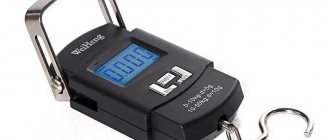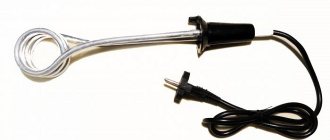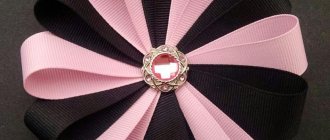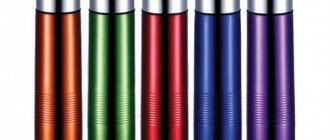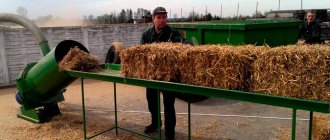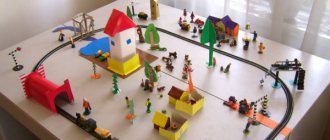In hiking conditions, unforeseen situations may arise in which one of the tourists gets injured. Each member of the group must be able to provide medical assistance. A stretcher made from improvised materials will help transport the victim to a medical facility where he will receive professional assistance. You should not take risks and provide medical care yourself in case of serious injuries that can cause serious complications or lead to death.
Let's talk about ways to make stretchers from improvised materials. It’s easy to make a stretcher in the forest; you just need to know the simple rules for making it. A little logic and ingenuity will help you quickly cope with an emergency.
Simple stretchers for the garden and garden from what is at hand
There should be a stretcher at every dacha. Indeed, in some situations you simply cannot do without them. Every summer, a lot of work is carried out to clean up the site, as a result of which there is a need to transport garbage. And stretchers cope with this task perfectly. On a good stretcher it will be possible to carry garbage, fertilizers, and soil. But a good stretcher at a hardware store can be quite expensive. Therefore, you can try to make such a stretcher at home. Detailed production of a stretcher of excellent quality can be viewed below.
How to make a stretcher
The base of any stretcher should be a pair of slats of the required size. But they can also use small poles and huge beams. It is necessary to choose a straight-grained wood species, because... in another case, the operation of the stretcher will last a short time. It is necessary to fit the timber or poles under the handles; for this, cutouts are made at each end at a distance of 15 cm. Without cutouts, the stretcher will be uncomfortable to use. Constant calluses and spots are guaranteed. Therefore, before starting the next stage, it is necessary to varnish the wooden surface, even if the wood is straight-grained and of excellent quality. Over the years, it will swell, fray and cease to be so convenient.
To be able to carry some items, it is necessary to make boards with a thickness of 20 to 25 mm and a length of 500 mm. This main platform is secured to the main poles using nails and other fastening tools. You can also use old plywood and roofing iron for the base. The sizes are selected individually, at the request of the owner.
Dense fabrics can also be used at the base of the platform. But it must be a very high-quality dark-colored material, which most likely will have to be replaced with a new one after the first season. But such stretchers are much lighter and more convenient to use.
It is also necessary to make wooden sides that will hold fallen pieces of fertilizer or debris. One side should remain open so that luggage can be easily loaded. When worn, this side should be in front so that the load does not fall out of the luggage. Also, for convenience, you can make a fourth drop-down side, which will not interfere with loading garbage and will hold it during transportation. You will need door holders and a latch there.
The dense fabrics mentioned above also include tarpaulin. By using poles for the base and a tarp as the bottom, you can create a folding stretcher that can be easily moved. But when fastening the fabric, you should not use nails, because... so it will tear very quickly. It is better to stretch around each pole and stitch with threads of the appropriate color.
This results in a stretcher that is comfortable and ready for use. Their creation does not take much money or time.
Source
Choosing a position for transporting the victim
As noted above, if the injuries received by a person are very serious, it is necessary to move him without changing his position. In less severe situations, you should be guided by the symptoms and general condition of the victim:
- A person must be placed on his side if he: is unconscious; received a burn or injury to the back of the body (back, back of the thighs); suffers from bouts of vomiting.
- During transportation, a person with: injuries to the neck and chest should be in a sitting or semi-sitting position; fractures of the upper limbs or collarbone.
- Transported in a supine position with legs elevated: for abdominal injuries; in case of significant blood loss; if internal bleeding is suspected.
- The victim should be moved in the so-called “frog pose” (on the back, with legs slightly spread, with a cushion placed under the knees): in case of spinal injury or spinal cord damage; with a fracture of the pelvic bones.
During transportation, it is necessary to constantly monitor the condition of the victim. If a person suddenly becomes worse, you should immediately stop and begin using resuscitation measures (artificial respiration, chest compressions). Activities should be continued until the victim’s condition improves.
Survival: How to make a stretcher from scrap materials
The more you travel, the greater the chance that something will happen to you. It happens that someone in the group, as a result of certain unsuccessful actions, gets injured and cannot move independently. In such cases, the burden of moving the victim falls on other members of the group.
Of course, you can grab the victim by the arms together and carry him, you can throw him on your back, but if you need to cover a long distance, then such movement of the victim is not suitable - carrying the victim is so inconvenient and extremely energy-consuming. It is much easier and more correct to carry the victim on a stretcher. But no one usually carries them with them, you say, and you will be absolutely right. The stretcher will need to be made from scrap materials, and you can read in this article exactly how to make a stretcher from what you have at hand.
So, how to make a stretcher yourself, with your own hands from improvised materials? First, let's disassemble the stretcher into its component parts (this rule applies to all things that you plan to make with your own hands).
As everyone knows, a stretcher consists of the following elements: a surface on which a person or load is carried, and “handles” that the porters grasp.
And now, in fact, the method of making the stretcher itself: two poles are taken, such as to support the weight of the transported person and two jackets, in our case it was a slide. The jackets are fastened, the sleeves can be turned inside the jacket, or left like that. Then the poles are inserted into the sleeves, as shown in the figure. The DIY stretcher is ready.
If the victim is from a military group and there are no suitable poles, you can use machine guns. Yes, they are shorter and the stretcher turns out to be sedentary, but this solves the issue of movement.
If you have a thick bag, then you can not use jackets, but make a stretcher from the bag. To do this, two holes are made in the bag itself along the edges for the poles.
If you don't have jackets, or they are so weak that they won't support the weight of what you're transporting, you can use belts and ropes as a carrying surface. Two poles must be tied to each other so that the person being carried does not fall past the intertwined belts or ropes, but is located on them. Accordingly, the more often they pass from pole to pole, the more comfortable the transported person will feel.
If you don’t have anything to make carrying handles from, you can make a frameless stretcher. The same blanket or piece of thick fabric can serve as a stretcher for carrying the transported object over a long distance. At the same time, at the corners of the blanket (let's call it that) it is necessary to form knots to make it easier to handle. If you just hold the blanket, squeezing it tightly in your hands, your hands and forearms will get tired very quickly.
You can also use a stretcher with one pole. Tie the same blanket at its ends to a pole, placing the victim in it. In this case, the stretcher must be carried on the shoulder, since the person being carried will hang much lower than the level of the pole.
Source
Preparation for transportation
Proper preparation should be made for transportation using available means.
First of all, the victim is examined to determine the nature of the injuries. First of all, you should be interested in the condition of the spine, head, neck, pelvic area and abdomen, as well as the limbs. It is necessary to ensure that the person is conscious. If the victim is unconscious, pulse and breathing should be checked.
If it is suspected that the victim's injuries are serious, transport should only be carried out if there is no hope that paramedics will arrive. In these situations, the victim should be moved in the position in which he is currently located.
Purpose of construction stretchers
This is a universal device that allows you to move various bulk loads - sand, crushed stone, cement, etc. Using a stretcher, you can also remove debris from a construction site and transport heavy loads, such as bricks, cinder blocks or ceramic tiles.
The use of this equipment requires the participation of two people, preferably with the same endurance. It is impossible to carry a loaded construction stretcher alone. Therefore, if you don’t have a partner, you will have to use a wheelbarrow or cart.
Types of stretchers
Depending on the material, stretchers are divided into three categories: plastic, metal and wood.
The first ones are intended mainly for bulk cargo. Most of these models are equipped with wooden handles. Their carrying capacity is no more than 110 kg. When working, it should be borne in mind that even the most durable plastic can crack or split from a careless blow, especially in the cold. At the same time, construction plastic stretchers have the advantage of being light weight, which makes the task of carrying loads easier. If necessary, they can be used as a container for diluting paint and building mixtures.
Metal stretchers are more durable. They are adapted to move up to 200 kg of loads. Made from sheet iron. The handles of such stretchers are usually wooden, in some cases upholstered with iron. When working, you must take precautions, as the possibility of cuts on metal edges cannot be ruled out. The tin body is not cheap, and it is practically impossible to repair.
Construction wooden stretchers are also used for various household purposes. They are very easy to repair, and it is also quite simple to make them yourself. The disadvantage of such stretchers is their significant weight. Moving them even without a load requires a lot of effort.
General rules for moving victims using improvised means
Depending on the nature of the injuries and their severity, there are several general principles that must be followed when moving victims:
- In case of injury to the cervical spine, it is necessary to immobilize the victim's head and neck before transportation. In other cases, the victim must be transported with his head turned to the side. In this way, it will be possible to avoid tongue retraction and asphyxia, as well as vomit from entering the respiratory tract.
- If the victim has lost a lot of blood, place him in such a way that his legs are positioned higher than his head during transportation. This is necessary to ensure blood flow to the brain.
- When climbing stairs, the victim must be carried head first. If they go down the stairs, the injured person is carried feet first.
- If the victim is transported by several people, then the one who goes ahead performs the duties of the main one. He must monitor the road, promptly informing about all possible obstacles. He should also coordinate the actions of other rescuers. It is important that others should not move in step. In this case, the person walking behind should monitor the condition of the victim.
Advantages of plastic stretchers
They are made of heavy-duty plastic and, unlike wood or metal, do not rot or corrode. Light weight combined with good capacity makes them indispensable, especially when carrying heavy materials.
The stretcher container is shaped so that the weight of the load being carried is distributed evenly. You can even move liquid solutions in it. Construction stretchers are equipped with wooden handles, which are more comfortable than plastic ones. In order to avoid the appearance of fungus or rotting, they are treated with a special compound.
To make stretchers, manufacturers use impact-resistant plastic that can withstand significant loads. This is reflected in the durability of the equipment and the absence of deformation during operation. Plastic stretchers are resistant to temperature changes. This allows them to be used in almost any weather conditions.
How to choose a stretcher
When choosing a construction stretcher, first of all you need to focus on its load capacity, material of manufacture and capacity.
Before purchasing, you need to inspect the product for defects.
A stretcher for carrying people requires a careful approach to selection, since among the huge selection of models for various conditions of use and tasks, it is difficult to choose the appropriate option based only on superficial knowledge.
Main criteria
When choosing a stretcher for transporting victims and wounded, it is necessary to take into account the following criteria:
• Load capacity;
• Construction type;
• Dimensions (both in transport and in working condition);
• Frame and base material;
• Number of sections and the ability to adjust their tilt;
• Availability of elements for securing the victim (belts, leg pockets, handrail);
• Availability of clamps for installation of resuscitation equipment;
• Price.
How to make a construction stretcher with your own hands
Situations arise when a stretcher of a certain size is needed for work, which is difficult to find in shopping centers. In this case, you can make them yourself. To do this, you will need a board about 30 mm thick, a galvanized metal sheet, fastening fittings and a set of tools.
Handles are cut out of the board, which are the basis of any stretcher. A cut-out up to 40 cm long is made at the bottom of the board to give it a shape that is convenient for gripping and to reduce the weight of the stretcher. Then a frame is constructed in the form of two boards, fixed transversely to the handles at a distance of about 60 cm from each other. This is done using self-tapping screws. The resulting frame is reinforced with steel corners on the inside.
After this, the flooring elements are attached according to a certain pattern. They are laid first along the edges, resting on the ends of the transverse boards and on the handles, and lastly the board is attached in the middle. A metal sheet is nailed to the bottom with mounting nails - and the construction stretcher is ready. It is recommended to place all fittings on the outside.
Source
DIY construction stretcher.
Hello, dear readers of my site.
Today we will look at how to make a construction stretcher with your own hands . I will describe for you in detail the entire construction process with drawings and visual photographs.
With this article I am opening a new section - building with our own hands. Here we will publish articles devoted to the manufacture of a variety of things that are so necessary for the household at every dacha. I hope you find it interesting, and of course, so as not to miss anything, I advise you to subscribe to site updates.
Very often, when landscaping a summer cottage, considerable physical strength is required, and issues such as moving bricks, soil, sand and other building materials or various types of garbage will require significant effort from you. It’s good that a wheelbarrow (trolley) is always at hand, but bad luck, it would need a well-trodden path, but off-road... Then a stretcher is used, or rather you will walk and carry too, it’s much easier and more fun, but in this case you will need another pair of hardworking hands. Take care of this in advance.
Yes, you can undoubtedly buy ready-made stretchers; they are available at the hardware store and are not that expensive, although only plastic ones. But be careful with them, if you hit them a little they will crack, although they are perfect for moving leaves, but they are unlikely to be up to heavy tasks. Perhaps someone will disagree with me, here, as they say, “to each his own.”
So, I propose the following version of a stretcher for the dacha. The main material for execution is wood.
For work, we need an edged board of thickness - 25mm, 30mm and galvanized. The tools we will use are a power saw or hacksaw, a screwdriver and a jigsaw. We will screw all the parts together with self-tapping screws.
Construction stages.
1. First, we prepare two blanks from edged boards 30 mm thick according to the following scheme. We draw handles on the board at both ends with a pencil. Cut it out.
It is better to make the handles rounded by cutting the edges with a jigsaw and then sanding them. When carrying, it is much more convenient to hold on to such handles; they lie tightly in the palm, which allows you to make a strong grip, as a result of which your hands get less tired. A well-polished surface will save you from splinters.
2. We connect the handles by twisting them together with additional boards, like this.
3. We move on to flooring the bottom, using a board with a thickness of 25 mm.
On one side we align the boards flush, and on the other we make an overhang. 4. Fasten the sides.
This is necessary for greater stability of the carried load, so that nothing spills or falls out. First, we place the two sides in front of each other as shown in the figure. Then we expose the closing side, fastening it with the other sides and with the base of the stretcher. This will make the structure stronger. If desired, the working surface of the stretcher can be covered with a galvanized sheet. This will significantly extend their service life. We measure the size, transfer it to a sheet, cut it out using metal scissors. We fasten the galvanization with self-tapping screws.
Personally, this is how it worked out for me. If possible, it is better to treat the surface of wooden stretchers with a special impregnation for wood. This will protect the product from atmospheric influences and from bugs.
So, by spending a little time and very little money, you can build such a trouble-free household assistant. Now you know how to make a construction stretcher with your own hands.
I wish you successful construction.
If you have a desire to make something else for your dacha, read the articles:
Source
Making wooden stretchers
General work planning
Knowing how to plan bars exactly to specified dimensions, you can make many different and necessary things, for example, a stretcher, a wheelbarrow (Fig. 1, 2). As always, you need to start by making a plan.
After reviewing natural samples and the technical drawing of the product, they select bars from which blanks can be sawed off for parts of the required length (Fig. 3). The blanks are taken with an allowance - slightly larger than the required size in length, width and thickness.
The sawn blanks are planed according to the dimensions indicated in the technical drawing. After such processing, the workpieces are marked along the length and the allowance is sawed off.
Rice. 1. Stretcher. 2 pcs
Rice. 2. Wheelbarrow
Rice. 3. Stretcher parts
Rice. 4. Assembling stretcher parts
Then they begin the final processing of the parts. Blanks for handles are rounded at the ends, and blanks for the side walls of the body have rounded corners. All parts are sanded and connected to each other with nails and screws (Fig. 4). The finished product is sanded again.
Don’t forget that before you tighten the screw, you need to either drill a hole in the part or prick it with an awl (why?).
Here is the general plan of work for the manufacture of stretchers: 1. Having familiarized yourself with the technical drawing, sample, select the necessary materials and tools. 2. Make two handles.
Rice. 5. Heating of stretcher handles according to size
3. Make legs. 4. Make the body of the stretcher. 5. Assemble the product and sand it. 6. Disassemble the sample into parts. 7. Measure the length, width and thickness of all parts. 8. Select blanks for the parts of the stretcher from the sawn bars. 9. Calculate the total length of all the walls of the body.
Stretcher handles
First, the bars for the handles must be cut to the dimensions (width and thickness) indicated in the technical drawing. Then the blanks are marked with a pencil, ruler and square. Mark the length of the handle (leaving allowance for sawing) and the places where the block needs to be rounded.
Very often there are defects at the ends of the bars. Therefore, marking must be carried out so that these defects can be removed (Fig. 5). The parts are sawed off in a miter box.
Rice. 6. Rounding handles in workbench clamps
The ends of the handles are rounded using a plane. The block is fixed on the workbench, as shown in Fig. 6.
First, thick chips are removed (Fig. 7, a), and then thinner and thinner (Fig. 7, c). When rounding the corners of the block, you need to turn it all the time, especially when removing thin shavings. Try to plan the handle so that it is round at the ends.
The second handle for the stretcher is made in the same sequence.
Rice. 7. Rounding the handles of the stretcher:
Particular attention should be paid to processing rounded surfaces. After all, the round handle is very comfortable to hold in your hand; when working, scratches and calluses will not appear on your fingers and palms.
The handle secured in the clamps of the workbench is covered with cloth-based sandpaper and, moving it, the part is cleaned across the grain (Fig. 8). After this, the block is wrapped in sandpaper and the part is processed along the fibers (Fig. 9).
A well sanded handle is round in shape and has no scratches, protrusions or corners. The quality of work is checked by carefully examining the manufactured part and comparing it with the sample.
Fig.8. Cleaning the round handle with sandpaper
Rice. 9. Sanding the round handle with sandpaper on the pillow
Below is a work plan for making a handle: 1. Select the workpieces and cut them to size. 2. Mark the length and outline the border of the rounding of the parts. 3. Saw off the allowance along the length of the workpieces, 4. Round off the ends of the handles with a plane. 5. Clean the parts with sandpaper.
Body
The body of the stretcher is very similar to the body of a dump truck, which does not have a tailgate. The body is assembled from four parts: three walls and a bottom. Two walls are slightly longer than the third, and the width and thickness of all walls are the same.
Before you begin manufacturing body parts, you need to carefully read the technical drawing and sample and draw up a work plan.
Rice. 10. Rounding the corners of the side walls of the stretcher body: a - marking according to the template; b - corner heating; c - corner rounding
First, the workpieces are selected and planed exactly to size (width and thickness). Then the bars are marked along the length and the allowance is sawed off in a miter box. For longer pieces, the corners must be rounded. Mark the rounding points according to the template.
You can round the corners with a chisel and a file. But it is better and faster to cut the corners with a saw, and then round them with a chisel and file them (Fig. 10).
All parts are carefully sanded and the body is assembled. First, the side walls are connected to each other with nails, and then the bottom is nailed to them. After this, the entire body is sanded again.
Work plan for the manufacture of the stretcher body: 1. Select materials and cut blanks of a given size. 2. Mark the length of the parts and saw off the allowance. 3. Mark the rounding points of the side walls according to the template and round the corners. 4. Clean the parts with sandpaper. 5. Connect the side walls with nails. 6. Connect the side walls of the body with the bottom with nails. 7. Clean the body with sandpaper.
Product assembly
All the main parts of the stretcher (handles, legs, body) are made. All that remains is to connect them together, and the stretcher is ready.
Nails and screws will be required to connect individual parts and stretcher parts. The body is attached to the handles with nails 1-5-20 mm long, and then with screws of the same length. You can use screws with countersunk and half-round heads. The legs are secured with screws 25-30 mm long. Remember how to correctly connect parts with screws.
Assembling the stretcher: 1. Mark the places for driving in nails and screwing in screws, connect the body and handles together. 2. Connect the legs and handles with screws. 3. Clean the stretcher with sandpaper. 4. Coat the finished product with drying oil or varnish.
— Manufacturing of wooden stretchers
After providing first aid, victims who cannot move independently must be carried out and removed from the affected area. For many of them, first aid will be only preliminary, since they need subsequent assistance from medical personnel (nurse, paramedic, doctor) at the medical station. To extract victims, carry them out and deliver them to a medical station, there are various methods of dragging and carrying out without a stretcher, on a stretcher and using improvised means.
The entire civilian population must be able to drag and carry out victims on stretchers, without stretchers and with the help of improvised means.
Rubble and destruction will require the ability to drag the victim out. It can be pulled away on its side, as shown in Fig. 27.
Rice. 27. Pulling the victim on his side.
A very convenient method is to place the victim on his back, with his hands tied at the hands. The person providing assistance kneels, spreading his legs over the victim’s body, and places his tied hands on his neck. Leaning on his hands, the person providing assistance lifts and gradually pulls away the victim, as shown in Fig. 28.
Rice. 28. Pulling away the victim while moving on his knees.
Rice. 29. Carrying the victim on a strap or belts folded into a ring.
Rice. 30. Carrying the victim on a strap folded in a figure eight.
If it is possible to move up, it is easiest to carry the victim using a stretcher strap or two waist belts connected together, folded in a figure of eight or a ring, as shown in Fig. 29 and 30. For a long distance, it is most convenient to carry the victim on the shoulder (Fig. 31), if there is no strap or belts. It is much easier to carry the victim together. A very common method of removal by two people using a “lock” from their hands (Fig. 32).
It is most convenient to carry the victim out on a stretcher (Fig. 33); they allow two or four people to carry it. If there are two people carrying a stretcher, they should not keep pace. When carried by four people, two people walk on the sides of the stretcher, supporting them by the bars. As they move, the pairs change. On level ground, the victim is carried feet first so that the person walking behind can observe his face (Fig. 34). Stretchers can also be made from improvised materials (Fig. 35).
Rice. 31. Carrying the victim on the shoulder.
Rice. 32. Removal on the “lock” from the hands.
Rice. 33. Sanitary stretchers in expanded and folded form.
Rice. 34. Carrying on a stretcher by four people.
Rice. 35. Stretcher made from improvised means: a - from two poles and straps; b - from two poles and a mattress pillowcase; c - from two poles and two bags.
To place the victim on a stretcher, mainly two techniques are used. Of the four rescuers, three kneel down facing the lying victim and, placing their hands under him, simultaneously lift him and place him on an open stretcher, which the fourth brings under the victim. Two rescuers can use a little-known method, but, as can be seen from Fig. 36, light and comfortable.
You can use a chair instead of a stretcher. The victim sits on a chair, one porter walks behind and holds the back of the chair, and the second walks in front and holds the chair by the upper part of the front legs, placing his torso between the victim’s legs.
Rice. 36. Laying the victim on a stretcher together.
Construction stretchers have been used for repair, household and domestic purposes since the times of the ancient Egyptian pharaohs, and at the same time they have not lost their relevance in the era of space flights, innovations and microelectronics.
Stretchers - basic definitions
No matter how rapidly technological progress develops, it is not able to completely abolish the manual carrying of goods. Perhaps this will happen in the distant future, when there is a place for robots in every household, but today such a prospect looks fantastic. And ordinary stretchers are more than realistic and quite universal.
Using a stretcher, stones, ceramic tiles, bricks for laying fireplaces, cinder blocks for building walls, and generally any piece of building materials are carried. They are convenient for transporting various bulk cargoes - from cement and sand to pebbles and crushed stone. On a stretcher you can remove debris from a construction site, leaves, grass and roots from personal plots. They are used for unloading feed, fertilizers and as a mobile container for many other household tasks.
The use of any stretcher requires the work of two people with relatively similar strength and endurance . If you don’t have a partner, you will have to use a garden cart or wheelbarrow as widely as possible - it is simply impossible to use a stretcher alone. Unless you carry them in an unloaded state and move them from place to place, which is unlikely to help in repairs or construction.
Types of construction and utility stretchers
According to the material of manufacture, construction stretchers are distinguished: plastic, metal and wooden:
The standard dimensions of construction stretchers relate to the dimensions of the cargo container and are 20-30 cm deep, 50-60 cm wide and 70-90 cm long. The total length of the handles lies in the range of 150-160 cm, so that it is possible to turn the stretcher when loaded on flights of stairs.
Why bother making ordinary stretchers yourself if this product is not in short supply for hardware stores? Firstly, because retail chains usually offer plastic and metal stretchers. The former have an unacceptably short service life, and the latter have a very significant cost.
Secondly, there is often a need to make a stretcher of a specific size, but it is difficult to select the entire set of finished dimensions. Thirdly, when making a wooden stretcher yourself, you can build a transforming device (which no store will offer you). Let me outline the guidelines for such a design in full detail.
How to make a wooden construction stretcher with your own hands?
From materials we will need a board 25-30 mm thick, a thin sheet of galvanized metal and an extended set for woodworking - a hacksaw, a jigsaw, a screwdriver, a drill and fastening fittings.
Step 1: Cutting out the handles
Curly handles are cut out of a board 10-12 cm wide and 3-4 cm thick, which will serve as the basis for all stretchers. The middle part of the board remains unchanged, and a small chamfer is removed from the edges on top, and a deep cut is made from below, to a length of 35-40 cm on each side. This reduces the overall weight of the handles and gives them a shape that is comfortable to grip.
It is best to apply the design of future cutouts on both boards according to the template and strictly adhere to it when processing. The more accurate the size of both handles, the more convenient it is to use the finished stretcher, since they will have an equilibrium balance. Cut out the handles on a carpenter's workbench, securing them securely in a vice or wedges.
Step 2: Assembling the stretcher base
Taking two boards exactly the same width as the uncut handles, we fix them at a distance of 50-65 cm from each other, constructing the frame of the future stretcher. The length of these cross boards determines the width of the stretcher and is 50-60 cm. The cross bars are fastened with self-tapping screws with a length of 60 mm, in increments of 3 cm, on a flat surface, checking the squareness of all nodes.
When the transverse boards are fixed, they must be reinforced with four steel corners on the inner (invisible) side of the frame. It is better to choose corners with long “shelves”, which have 3-4 mounting holes on each side. Additional fittings will give the entire structure high strength and allow it to carry loads weighing more than 100 kg.
Step 3: Build the deck
Boards with a thickness of 25 mm or more are laid on the finished frame, and this is done according to a strictly defined procedure. On one side, the flooring boards are exactly “flush” with the dimensions of the stretcher, but on the other, they should protrude about 5 cm beyond the dimensions.
The first to be attached are two boards from the ends of the flooring - they rest both on the handles themselves and on the transverse boards. Fastening is carried out with self-tapping screws with a length of 50 mm, with a high frequency of installation steps - at least 3 cm between screws. The following flooring elements are attached only from the end parts, where the handles lie under them. The middle board will have to be precisely cut to length and placed in the resulting groove, secured with at least one screw on each side.
Step 4: Raise the sides and arrange the bottom
Now you can fasten two short sides and one long one - the one on the leveled side of the flooring. For the sides use a board with a thickness of 20 mm. It is most convenient to attach the sides to steel corners, and from the outside - if the fittings are located inside the stretcher, it will become clogged with bulk cargo and can be easily damaged by massive bricks, etc.
A sheet of galvanized metal is placed on the bottom, cut exactly to its size. Galvanized fastening is carried out with short mounting nails with wide heads, in increments of 10-12 cm. At the same stage, it is convenient to put special rubberized attachments on the handles at a distance of 2-3 cm from the ends, so as not to damage the hands if the loaded stretcher accidentally hits an obstacle .
Step 5: Making a folding side
The final stage of independent “stretcher construction” is associated with the manufacture and fastening of the folding side. This part is useful when transporting light and bulk cargo, especially over long distances. A board of small thickness (from 15 mm) and length is tried on the open side of the flooring; its width may slightly exceed the height of our stretchers. Rotary hinges are attached to the protruding end of the flooring and the mobile side. Along the edges of this side it is worth providing fittings to secure it in the folded state - latches, hooks, etc.
This is an approximate “recipe” for how to make a universal stretcher from wooden boards. If carrying bulk cargo is not relevant for you, then stage 5 can be omitted - bricks, cinder blocks and bags of cement can be moved with one open side, which even makes loading and unloading easier.
Source
Device and characteristics
The simplest classic stretcher consists of two poles connected to each other by a strong rectangular fabric.
This design allows them to be folded when not needed, conveniently stored and transported.
Both poles are longer than the base material, which turns all ends into quite comfortable handles.
When carrying any load, one person takes the ends of the poles on one side in each hand, and the other on the opposite side.
For convenient transportation of cargo, both people must be the same height and have similar physical strength.
Material
In the manufacture of poles, as a rule, metal is used that has good strength characteristics.
It is slightly susceptible to deformation under moderate loads.
Since the poles actually form a frame, and human labor is used in the work, they are hollow tubes made of durable alloys.
Treated hardwood is often used as an alternative, however, the longer the poles, the greater the stress on them in the center, meaning they can easily break under the heavy weight.
And the wood itself is heavier than metal.
The main part, depending on the purpose, can be wooden, metal or fabric. Plastic is often used as a fairly durable, yet lightweight material.
Dimensions, weight and capacity
Construction stretchers weigh on average 4 - 7 kg with a capacity of 70 - 80 liters.
The most popular models are about 730 - 760 mm long and 500 - 550 mm wide.
The average length of a classic stretcher for a person is 220 cm.
This allows you to fit even a very tall man into them without any problems.
The width of such a device in working (unfolded) condition is about 480 – 600 cm.
Of course, this is the average width that most models have.
The weight of any stretcher is its cornerstone.
Since the device is carried manually, this parameter must be minimal.
Ordinary options made of metal tubes and canvas fabric weigh no more than 9 kg, while the weight of frameless raincoat models for the Ministry of Emergency Situations does not reach 1 kg.
